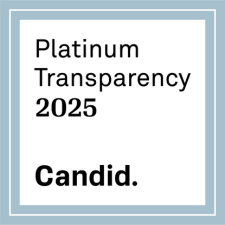EM 2022 LLSA Reading List
Scheuermeyer FX, Andolfatto G, Christenson J, Villa-Roel C, Rowe B. A multicenter randomized trial to evaluate a chemical-first or electrical-first cardioversion strategy for patients with uncomplicated acute atrial fibrillation. Acad Emerg Med 2019 Sep;26(9):969-81. PMID: 31423687 DOI: 10.1111/acem.13669.
- In the Scheuermeyer, et al., study on acute atrial fibrillation, study patients presented with ___________________ of less than 48 hours, CHADS2 score of ___________________ and were between 18 and ___________________ years of age.
- In the AF study, all patients were eventually discharged from the ED but patients in the ___________________ had a significantly shorter ED LOS.
American College of Emergency Physicians Clinical Policies Subcommittee (Writing Committee) on Acute Headache. Clinical policy: critical issues in the evaluation and management of adult patients presenting to the emergency department with acute headache. Ann Emerg Med 2019 Oct;74(4):e41-e74. PMID: 31543134 DOI: 10.1016/j.annemergmed.2019.07.009.
- Although the presence of neck pain and stiffness on physical examination in ED patients with an acute headache is strongly associated with SAH, their absence ___________________ to rule out SAH.
- The use of nonopioid medications in the treatment of acute primary headaches in ED patients is ___________________ over potent opioid medications.
Black AD. Managing the breastfeeding patient in the emergency department. Ann Emerg Med 2020 Jan;75(1):105-10. PMID: 31439365 DOI: 10.1016/j.annemergmed.2019.06.015.
- According to the American Academy of Breastfeeding Medicine, ___________________ is the preferred oral narcotic analgesic agent.
- According to the American College of Radiology magnetic resonance imaging with gadolinium is considered ___________________ in breastfeeding patients.
Moore CL, Carpenter CR, Heilbrun ML, Klauer K, Krambeck AC, Moreno C, et al. Imaging in suspected renal colic: systematic review of the literature and multispecialty consensus. Ann Emerg Med 2019 Sep;74(3):391-9. PMID: 31402153 DOI: 10.1016/j.annemergmed.2019.04.021.
- In this systematic review it was found that ___________________ was unlikely to miss stones needing intervention.
- In this multi-specialty evidence-based consensus article by Moore, et al., a 35-year-old male with a history of stones who presents with typical symptoms and adequate pain relief, the imaging study of choice is ___________________.
Gross BA, Jankowitz BT, Friedlander RM. Cerebral intraparenchymal hemorrhage: a review. JAMA 2019 Apr;321(13):1295-303. PMID: 30938800 DOI: 10.1001/jama.2019.2413.
- According to the JAMA review article by Gross et al., the 1-year survival rate for cerebral intraparenchymal hemorrhage is ___________________%.
- In patients with a high international normalized ratio (INR) due to vitamin K antagonists, ___________________ are preferred over ___________________.
Duff JP, Topjian AA, Berg MD, Chan M, Haskell SE, Joyner BL Jr, et al. 2019 American Heart Association focused update on pediatric advanced life support: an update to the American Heart Association guidelines for cardiopulmonary resuscitation and emergency cardiovascular care. Pediatrics 2020 Jan;145(1): 140(24):e20191361. PMID: 31727859 DOI: 10.1542/peds.2019-1361.
- For airway management, the AHA PALS update concluded that it is reasonable to continue bag-mask ventilation versus ___________________ in pediatric patients with out-of-hospital cardiac arrest.
- The AHA PALS update concluded it is reasonable to use targeted temperature management of 32° C to 34° C followed by 36° C to 37.5° C, or to use targeted temperature management of 36° C to 37.5° C, ___________________ after resuscitation from out-of-hospital cardiac arrest or in-hospital cardiac arrest.
Miller KA, Andolfatto G, Miner JR, Burton JH, Krauss BS. Clinical practice guideline for emergency department procedural sedation with propofol: 2018 update. Ann Emerg Med 2019 May;73(5):470-80. PMID: 30732981 DOI: 10.1016/j.annemergmed.2018.12.012.
- According to the Clinical Practice Guideline for ED Procedural Sedation with propofol the recommended initial bolus is ___________________ with additional boluses of ___________________ every ___________________ minutes with obese patients receiving a lower total body weight dose.
- Children require ___________________ per kilogram dosing to achieve desired sedation.
- Use of supplemental oxygen is ___________________ in the adult and pediatric patient receiving propofol for sedation.
PEGeD Study Investigators. Diagnosis of pulmonary embolism with d-dimer adjusted to clinical probability. N Engl J Med 2019 Nov;381(22):2125-34. PMID: 31774957 DOI: 10.1056/NEJMoa1909159.
- According to the authors, avoiding chest CTA in suspected PE patients with low Well’s C-PTP and a d-dimer of ___________________ is safe and PE can be ruled-out.
- The authors of this study explain that the two ways to possibly increase the percentage of patients who have suspected PE ruled-out using the C-PTP/d-dimer assessment are either ___________________ or ___________________.
NETT and PECARN Investigators. Randomized trial of three anticonvulsant medications for status epilepticus. N Engl J Med 2019 Nov;381(22):2103-13. PMID: 31774955 DOI: 10.1056/NEJMoa1905795.
- While evidence supports the use of benzodiazepines in seizures, up to ___________________% of patients do not respond to them.
- Of the three most commonly used medications used to treat refractory seizures, only ___________________ is labeled by the FDA for this in adults and none approved for children.
Albassam OT, Redelmeier RJ, Shadowitz S, Husain AM, Simel D, Etchells EE. Did this patient have cardiac syncope?: the rational clinical examination systematic review. JAMA 2019 Jun;321(24):2448-57. PMID: 31237649 DOI: 10.1001/jama.2019.8001.
- According to the review article by Albassam, et al., an age at first syncope of at least ___________________ was associated with the greatest likelihood of cardiac syncope.
- Reviews by the European Society of Cardiology and American College of Cardiology/AHA guidelines indicate that cardiac markers such as NT-proBNP and troponin should ___________________ routinely used when evaluating for cardiac syncope.
Click to see all answers
- In the Scheuermeyer, et al., study on acute atrial fibrillation, study patients presented with uncomplicated AF of less than 48 hours, CHADS2 score of 0 or 1 and were between 18 and 75 years of age.
- In the AF study, all patients were eventually discharged from the ED but patients in the electrical-first strategy had a significantly shorter ED LOS.
- Although the presence of neck pain and stiffness on physical examination in ED patients with an acute headache is strongly associated with SAH, their absence should not be used to rule out SAH.
- The use of nonopioid medications in the treatment of acute primary headaches in ED patients is preferred over potent opioid medications.
- According to the American Academy of Breastfeeding Medicine, hydrocodone is the preferred oral narcotic analgesic agent.
- According to the American College of Radiology magnetic resonance imaging with gadolinium is considered safe in breastfeeding patients.
- In this systematic review it was found that radiology performed ultrasound was unlikely to miss stones needing intervention.
- In this multi-specialty evidence-based consensus article by Moore, et al., a 35-year-old male with a history of stones who presents with typical symptoms and adequate pain relief, the imaging study of choice is ultrasound.
- According to the JAMA review article by Gross et al., the 1-year survival rate for cerebral intraparenchymal hemorrhage is 40%.
- In patients with a high international normalized ratio (INR) due to vitamin K antagonists, prothrombin complex concentrates are preferred over FFP.
- For airway management, the AHA PALS update concluded that it is reasonable to continue bag-mask ventilation versus attempting an advanced airway such as endotracheal intubation in pediatric patients with out-of-hospital cardiac arrest.
- The AHA PALS update concluded it is reasonable to use targeted temperature management of 32° C to 34° C followed by 36° C to 37.5° C, or to use targeted temperature management of 36° C to 37.5° C, for pediatric patients who remain comatose after resuscitation from out-of-hospital cardiac arrest or in-hospital cardiac arrest.
- According to the Clinical Practice Guideline for ED Procedural Sedation with propofol the recommended initial bolus is 0.5-1 mg/kg with additional boluses of 0.25-0.5 mg/kg every 1-3 minutes with obese patients receiving a lower total body weight dose.
- Children require higher per kilogram dosing to achieve desired sedation.
- Use of supplemental oxygen is recommended in the adult and pediatric patient receiving propofol for sedation.
- According to the authors, avoiding chest CTA in suspected PE patients with low Well’s C-PTP and a d-dimer of less than 1000 ng/mL is safe and PE can be ruled-out.
- The authors of this study explain that the two ways to possibly increase the percentage of patients who have suspected PE ruled-out using the C-PTP/d-dimer assessment are either increasing the d-dimer cutoff threshold level that defines a negative test or using the d-dimer testing to rule out PE in more than just patients with a low C-PTP.
- While evidence supports the use of benzodiazepines in seizures, up to 33% of patients do not respond to them.
- Of the three most commonly used medications used to treat refractory seizures, only fosphenytoin is labeled by the FDA for this in adults and none approved for children.
- According to the review article by Albassam, et al., an age at first syncope of at least 35 years old was associated with the greatest likelihood of cardiac syncope.
- Reviews by the European Society of Cardiology and American College of Cardiology/AHA guidelines indicate that cardiac markers such as NT-proBNP and troponin should not be routinely used when evaluating for cardiac syncope.



